Ford makes come-from-behind push with Mach-E as industry enters new era
Jim Farley, the new Ford CEO, arrived early for his appointment at the old Ford Piquette Avenue plant in Detroit, the building where the gasoline-powered Model T was born more than a century ago.
On this recent day, a Grabber Blue all-electric 2021 Mustang Mach-E was sitting in front of the plant, which has been turned into a museum filled with collector cars that shine like new.
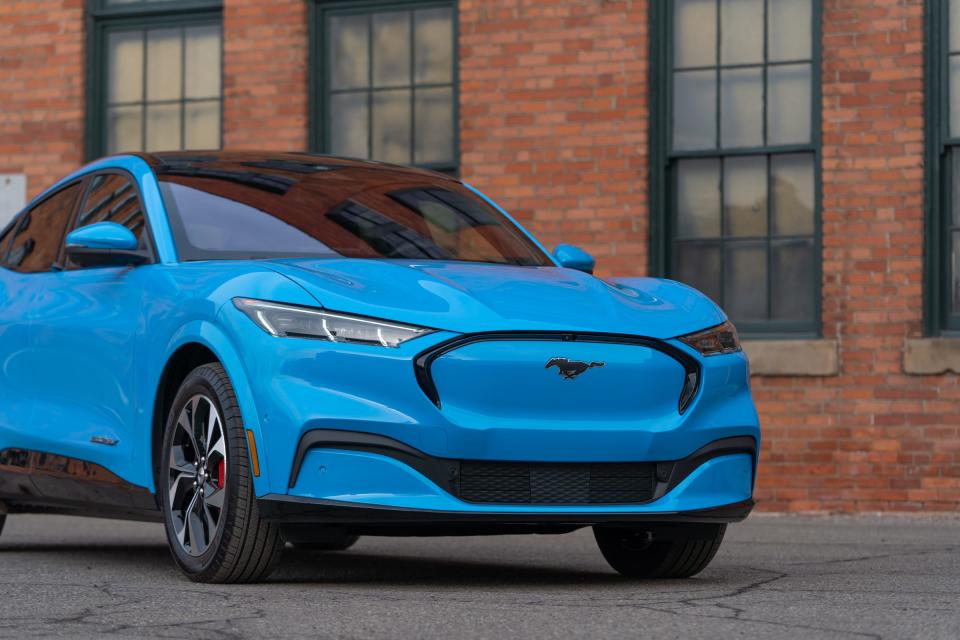
People come here from all over the world to see and experience the past.
But Farley arrived at the plant to talk about the future.
"Ford has always been on the forefront of what’s new," he said. "Now it just happens to be a Mach-E."
This man is known inside and outside the industry as a gearhead, someone who eats, sleeps, breathes, talks and races fuel-burning cars. In November, he defeated teams racing in pairs while driving his 1978 Lola 106 mph solo. Farley understands cars and fighting to win.

He took the helm of Ford nearly four months ago, exactly 112 years after the first Model T was built on Oct. 1, 1908. Production of 15 million Model T's over 19 years transformed America forever.
And now it's happening again.
With new leadership in Washington, the automotive industry says it will see rapid adoption of revolutionary changes.
F-150 dominance
Ford, as the maker of America's popular F-150 pickup, appreciates the tradition of pumping gas into the internal combustion engine, often called ICE, as well as anyone. The F-Series franchise is widely praised as a successful company within a company, generating an estimated $50 billion each year.
Yet more than a dozen state governments, led by California and its billions in spending power, as well as Europe and Asia, are pushing auto companies to build all-electric vehicles that require pumping electricity instead.

Not only are states and countries providing incentives to make the change, but they're issuing restrictions on sales of vehicles that don't. In California and several other states, electric vehicles can use speed lanes during rush hours and shorten commute times.
Tesla, run by billionaire Elon Musk, is established as the all-electric leader with four popular models that run on batteries, building a record 499,000 vehicles in 2020.
"The auto industry is undergoing the most significant technological change in nearly 100 years. If the established companies do not make this transition, they're going to go out of business," said John McElroy, "Autoline" host and veteran industry analyst.
"Tesla has shown that startups can thrive and steal sales from traditional automakers. We all know Tesla is the most valuable car company in the world. Tesla, alone, is bigger than the entire American auto industry," he said.
Tesla is valued at $802 billion, compared with Ford at $45 billion or General Motors at nearly $79 billion.
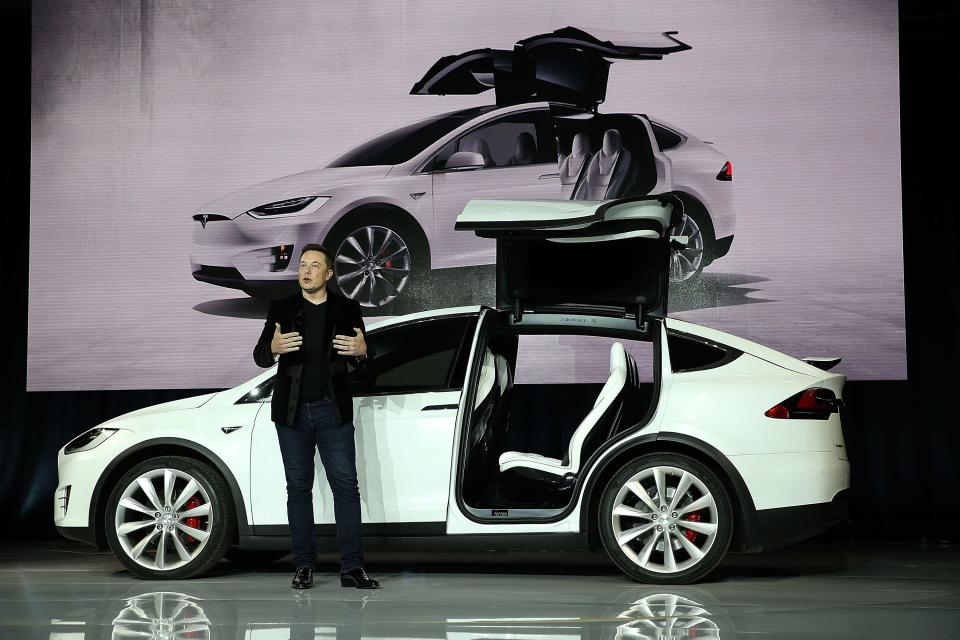
For Ford, it is Farley, the grandson of a Model T factory worker, who is guiding the company through "the last days of the ICE Age" to electrification, a term used by Morgan Stanley analyst Adam Jonas in his Dec. 2 note to investors.
Strategic timing
"Financial markets, for sure, are seeing the e-mobility revolution happen," Farley told the Free Press. "In December, in Europe, 1 of 10 vehicles sold was a pure electric. Not plug-in or hybrid but pure electric. China has been on this increase for a long time. This is a reality. Customers are moving to e-mobility."
Ford has made fewer headlines than its crosstown rival GM in the race for electric dominance. GM CEO Mary Barra often wins praise from Morgan Stanley, Credit Suisse and others for her plan to bring 30 electric vehicles to market in five years.
Farley isn't fazed by the attention heaped on competitors. He said Ford is focused in a way that others aren't and while they talk about plans, Ford is not just executing but winning critical reviews for its first product specifically designed to challenge Tesla: the Mustang Mach-E, which began shipping from its plant in Cuautitlán Izcalli, Mexico, at the end of 2020.
"Ford's electrification strategy is not like others," Farley said. "We're going to have very emotional vehicles. We're electrifying our most iconic vehicles. Everyone knows what a Mustang sounds like and feels like. This Mach-E is a different kind of Mustang, but it's still a Mustang."
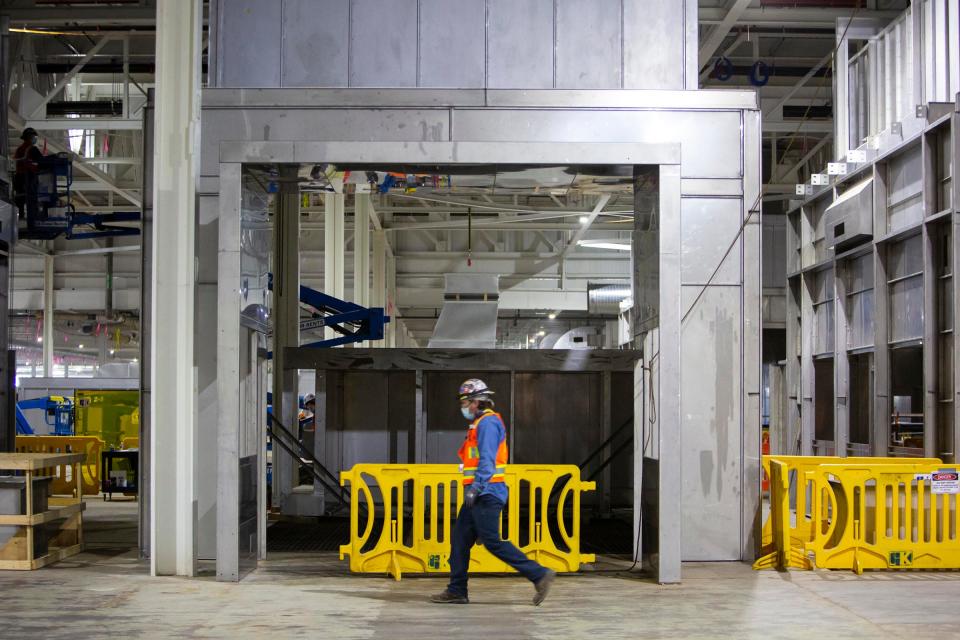
Now is the first inning of the electrification game, and the company isn't planning to compete in every market segment but instead dominate areas of established strength, he said.
Farley is pushing his team to break constraints and improve battery capacity, get more electric vehicles into the product cycle plan for future years and grow the volume of vehicles that can be manufactured given the anticipated demand for the Mustang Mach-E, E-Transit van and the 2022 all-electric F-150.
Everything fuels the electrification strategy at Ford, including the Jan. 11 announcement to close three plants in Brazil. That move allows the company to reprioritize spending and bring customers "connectivity, electrification and autonomous technologies."
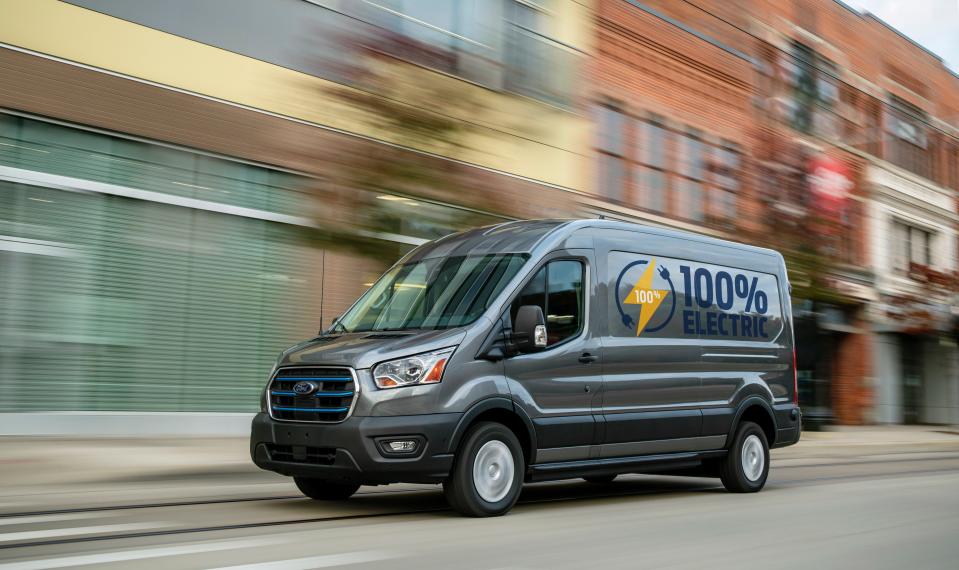
The automaker has essentially abandoned cars to focus on trucks and SUVs, which have generated strong revenue and record per-vehicle transaction prices.
Ford will be electrifying its most recognizable SUVs too, Farley said, though he declined to provide detail. As the market floods with options, Ford wants to stand out and have its specific products established as nameplates before pivoting to electric nameplates.
"That's very specific to Ford," Farley said. "Mach-E is coming out after Tesla but before others. You don't see any vehicle out there that has Detroit swagger that's affordable. Mach-E is $35,000 with the ($7,500) federal incentive."
Best in North America
The company celebrated this month when 50 jurors awarded the 117-year-old carmaker two of three wins in the most competitive categories in the North American Car, Truck and Utility Vehicle of the Year awards. The 2021 F-150 and the 2021 Mustang Mach-E – not as an electric vehicle winner but as the best utility overall.
"It's here now, and we're selling it," Farley said. "We have a great order bank."
Ford hasn't released Mach-E sales numbers yet.
Emma Bergg, a Ford spokeswoman, said Thursday, "While we aren’t providing details, we expect sales to be around 50,000 globally in the first year of production."

Over-the-air updates will add features including a hands-free driving system. Onboard navigation will plot cross-country routes for battery-charging stops. The base model can go 230 miles on a charge, extended-range models up to 300.
The hot new SUVs won't fill dealerships; they'll be made to order. This was the first time Ford had ever launched a product through a reservation process, anticipating intense demand. California is leading that demand in the U.S.
The Golden State accounted for 256,800 electric vehicle registrations or nearly 47% of the national total as of the end of 2018, according to IHS Markit data. Washington state came in second with 28,400. Michigan had just 4,210.
"GM, Ford and Chrysler face an existential threat," McElroy, the analyst, said. "If they don't figure out how to compete in the electric market, they're going to go out of business."
Fact is, GM saw its stock price climb to historic heights – past $50 – after its CEO gave a keynote speech on Jan. 12 at the Consumer Electronics Show outlining plans for the future.
"GM has a pretty damn good strategy and it's way ahead of Ford and everybody else right now," McElroy said. "Among traditional automakers, GM is clearly in the lead. Ford is definitely behind."
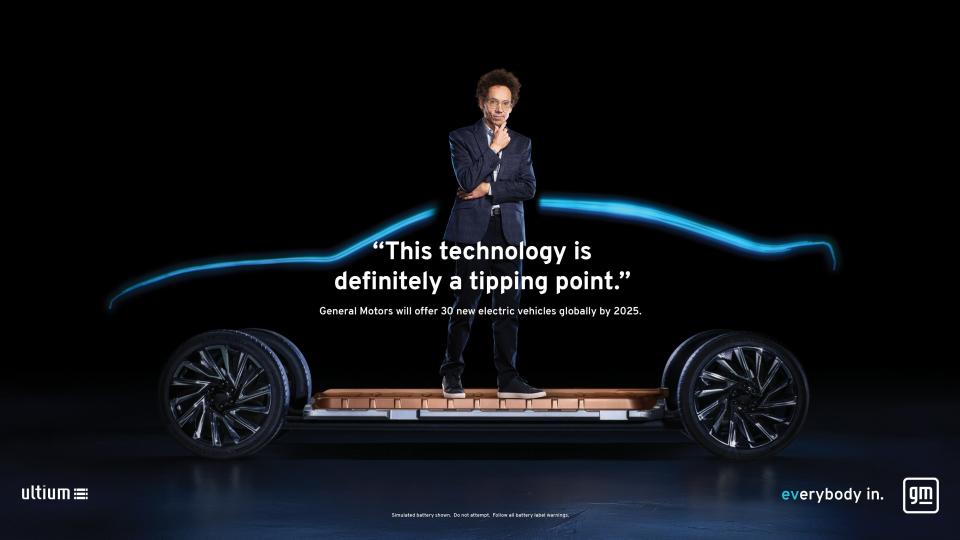
Farley offered a different perspective.
"We are the first and only company that I see that will offer an electric van and an electric pickup truck in 24 months," he said. "That's not come from behind. We're the first. We are the dominant player."
Nonetheless, Jonas wrote to Morgan Stanley investors on Nov. 25, despite Ford’s “sense of urgency” the automaker’s electric vehicle strategy "is still not fully clear to us.”
There's no turning back now.
"It's getting more and more serious," McElroy said. "Cities and countries are actually banning the internal combustion engine. England moved up from 2035 to 2030. Automakers all of a sudden are like, wait, what do you mean a ban? Market forces aren't driving this tipping point to EVs yet."
The industry, though, is also seeing n historic shift in how it makes money. For more than a century, automakers profited solely off vehicle sales. Now the business model is patterned after Facebook and Google, which monetize data and information about consumers.
The vision is not to make money just on each car sale but on digital services and collecting useful data.

"That's where the world is going," McElroy said. "BMW is toying with the idea of having a monthly charge for when customers want to use electric heated seats" instead of just buying the option once, for example.
Another big twist in the value of auto companies is the need to constantly find ways to grow earnings, Jonas said on Dec. 3 during a speech to the Florida Automated Vehicles Summit. The amount of time people spend in their cars, billions of hours, is coveted by the tech industry that wants to take that information and make money.
This follows the same model as Facebook and Google, which don't charge users for their services but instead charge for access to eyeballs using the products.
Ford wants to monetize information about driver habits.
As a dominant player in the commercial sector, Ford can take driver information and learn things about business needs, like the average route is 74 miles, Farley said. That helps Ford forecast battery life needed for company vans or provide over air alerts digitally when vehicles need service, to avoid unplanned repair time. It's an incredible competitive advantage, he said.
"This goes way beyond the product. The product is a commodity; it's a box on wheels," Farley said. "It's customized interiors, digital experience, e-service networks so you're never down."
'Greater questions'
By focusing nearly exclusively on electric, GM seems to be positioned well long term, said analyst Dan Levy at Credit Suisse.
"You're ultimately looking at earnings power. Not just what the earnings power is this year or next year but the earnings power down the line. This is about opportunity for cash flow generation, position for the future. We're in a market that places a premium on narrative and focuses on growth," he said.
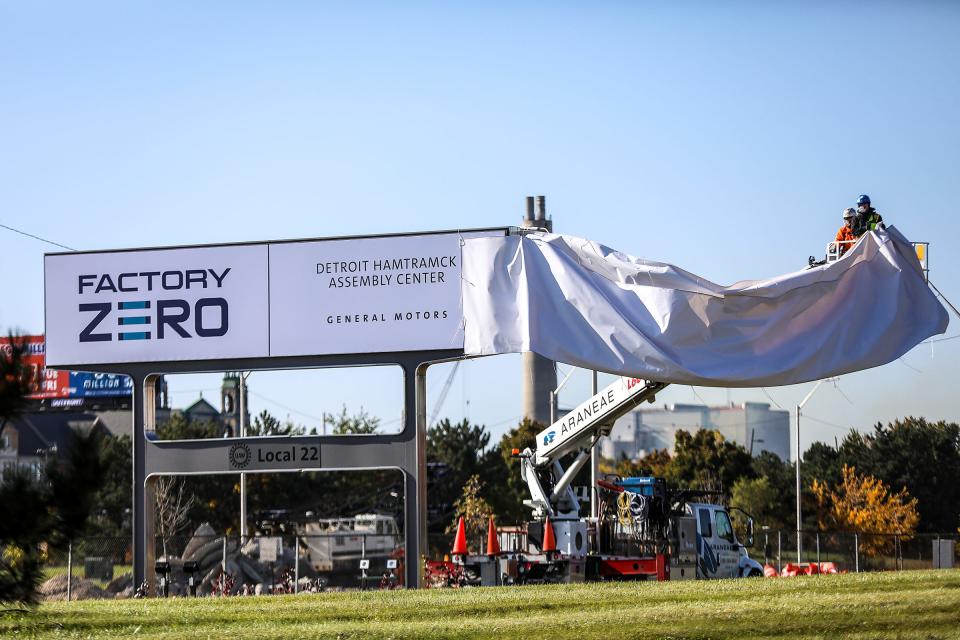
"We view GM as better positioned and others generally do, too," Levy said. "At Ford, there are greater questions about their long-term ability to make this transition. I do think investors have come to better appreciate Ford's potential under Jim Farley. But there's still much more work ahead."
However, Farley said Ford's commercial-vehicle strength in Europe is a plus in terms of data analytics; Just wait, Wall Street will see, he says confidently.
But analyst Dan Ives of Wedbush wrote in his Jan. 14 investor note, "While there are 150-plus automakers aggressively going after the EV opportunity globally, right now we believe it’s Tesla’s world and everyone else is paying rent."
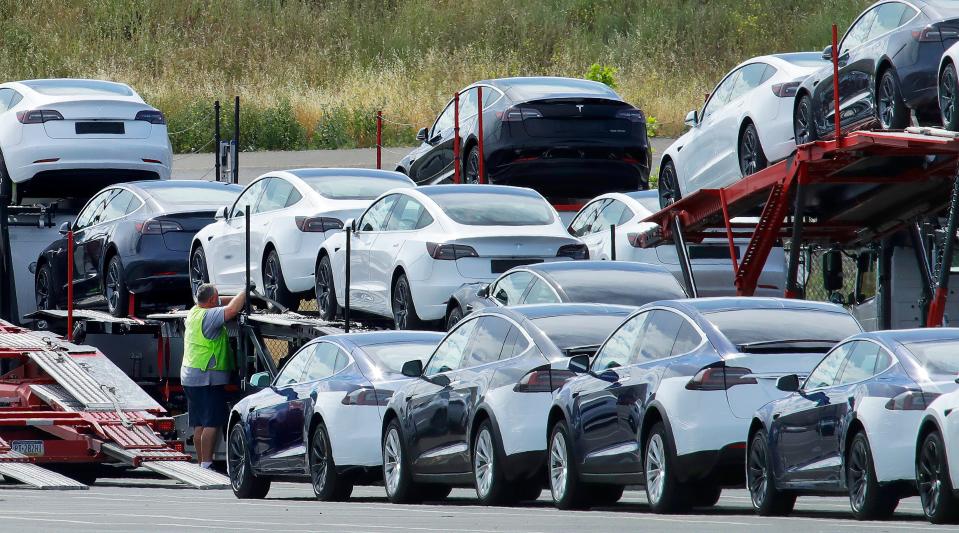
White House effect
With a new administration that acknowledges the science of climate change and vows to invest in transitioning the auto industry to cleaner technology, analysts say this can only help the Detroit Three and the industry overall.
For now, Tesla is a big player in California, home to 1 in 6 consumers, McCabe noted.
The landscape will change dramatically if President Joe Biden fulfills his goal to transform the infrastructure and invest in charging stations and consumer incentives to reduce greenhouse gas emissions.

Already in California, Ford has been recognized by Gov. Gavin Newsom as an ally in the push toward improving air quality.
California dreaming
"Ford has been a leader from Day 1, saying, 'This is our future and we're going to collaborate with California.' Honda came on early, too," Jared Blumenfeld, CalEPA secretary, told the Free Press. "The game is going to be about 2026 and beyond. What you're seeing is an alignment of interests with auto manufacturers and regulators. That alignment didn't exist between the Trump administration but it does with the Biden administration. It's a huge positive economic opportunity."

He added, "I don't want to sugarcoat it too much. When autos and the Biden administration sit down to hash out how to move forward, there will still be pushback against California with some people saying we're too ambitious. But at least it's a conversation where we're all starting from a place that climate change is real, and electric vehicles are going to be a large part of the equation."
While Ford, Honda, BMW and Volkswagen sided with California in July 2019 in an effort to set its own clean air standards, GM, Fiat Chrysler Automobiles, Toyota and other automakers sided with the Trump administration's attempt to overturn the California standards.
Bill Ford, executive chairman, an advocate of sustainability since he joined Ford Motor in 1979, played an instrumental role in his company's decision to stand with California.
Opposing the state's efforts was a shocking strategy for GM and Toyota, given their vocal commitments to sustainability, California officials said.
"It was actually shameful," Blumenfeld said. "This was only about short-term political benefit. And it was damaging to our relationships with them."
After Biden won the election, GM switched sides. CEO Barra put out a letter that her company would no longer support the Trump administration and urged other automakers to do the same. The move came as a surprise to Toyota and then-FCA.
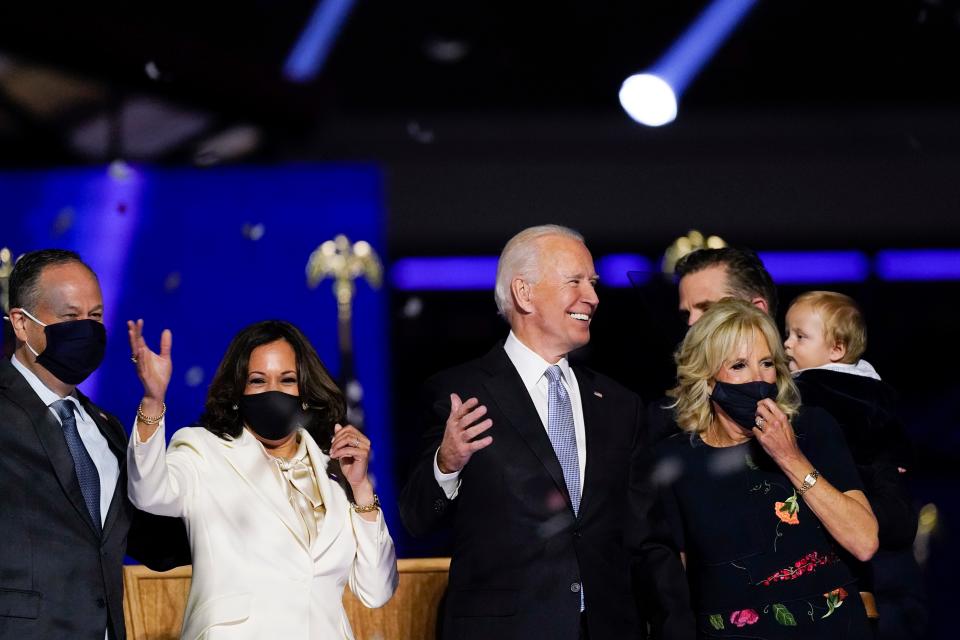
"GM went rogue and said, 'We're out of the deal,' " said a source close to the situation who was not authorized to speak to the media but confirmed the treatment of FCA and Toyota. "Mary Barra issued a public letter saying, 'We're out and urge our old teammates to join us.' We were blindsided."
GM said the company notified fellow automakers immediately prior to announcing its new position.
The alignment with the Trump administration's position "was always about wanting a national program and wanting to be part of that conversation," said Jeannine Ginivan, GM manager of public policy communications.
"With the president-elect putting out some pretty ambitious electrification goals – charging stations, building back better, manufacturing electric vehicles in the U.S., positioning the American autoworker to win the race for electrification and Gavin Newsom talking about going all-electric by 2035 – we're seeing an alignment between the future administration and California that we did not see before," Ginivan said.
The sudden move by GM also caught observers by surprise.
"It was all politics," said Michelle Krebs, executive analyst for Cox Automotive. "They’re all in on EVs – and then supporting the Trump administration and fighting California. It seemed odd to me. The only thing you can assume is they didn’t want to upset the Trump administration."
At the time, Farley tweeted about GM 'reversing course.'
'Remember this'
Inauguration Day was a critical inflection point.
"What you're seeing is a realignment and reshuffling of interests," Blumenfeld said. "The Department of Justice is saying we're no longer going to be part of a lawsuit against California. The former Trump administration position of the EPA not granting a waiver to California is being reversed by Biden, very likely. And that changes the political landscape."
California long has been an aggressive leader on air quality. Back in 1970, then-President Richard Nixon, a California Republican, created the Environmental Protection Agency that established clean air and water oversight.
Despite the fact that Barra praised the Biden plan to invest in technology needed to support electric car growth, the influential Sacramento Bee wrote a scathing editorial on Nov. 24 that urged readers: "GM sided with Trump against California. Please remember this when buying a new car."
More: Ford confirms delay of hundreds of 2021 Mustang Mach-E deliveries for quality review
More: Ford reveals plan for $700M plant, jobs at Rouge plus all-electric Ford F-150 secrets
'Gone crazy'
If early orders are any indication, the Ford message is finding traction out West.
Ashley Valletta, general manager and vice president of The Ford Store Morgan Hill, California, located south of San Jose, said last fall the demand for electric cars was insatiable. "Tesla has just gone crazy in northern California and the Bay Area, in general." But in her market, the leading brands are Toyota, Honda, Tesla and Ford – in that order. Tesla outsells Ford by the thousands.
"We see the Mach-E as being a competitor to Tesla," she said, with more than 50 orders in the system.

Then and now
Back in Detroit, on that cloudy afternoon earlier this month, Farley looked at his watch and wondered about Piquette Plant visitor hours, thinking he might be able to walk the museum, which is no longer owned by Ford but has been run as a nonprofit for 20 years by the Model-T Automotive Heritage Complex.

"Do I have time just to look through the cars?" Farley asked David Flatt, executive director of the museum, who nodded.
The executive zigzagged among dozens of Fords – Model A, Model B, Model C, Model F, Model K, Model N and Model R, Model S and Model T. He zeroed in on the fancy Model K, built before the Model T and selling for $2,800 at the time.
The Piquette Plant was the first factory to build more than 100 cars in a single day, which began with the Model N. Everyone knows the Model T because it was the most successful of the letter cars, which initially sold for $850 and eventually dropped to $265.
Farley was reading placards aloud and laughing and sharing his own stories about Ford history and evolution of the vehicles, materials used to make them and prices. He talked about mistakes and discoveries to a new aide in an otherwise empty museum near closing time.
"Did you know snowmobiles came from Model T's?" Farley said, pointing to a car on blades.
He went off for a bit, to be alone with the cars. And then returned.
Chevy vs. Ford
"In '30 or '31, or even earlier, Henry said, 'Chevrolet's got that more powerful engine than us, so we've got to come out with a V8. So he took the people, they had to leave Ford, they had to quit Ford, and he found a place in Greenfield Village where they worked. It was a separate garage," Farley said, walking between cars like a professor in a classroom, pointing to the different vehicles and design materials.
"They were sequestered and couldn't tell anyone what they were working on. They came up with all these different kinds of V8s until they settled on the flathead, which went into this car the next year, '32. Totally changed Ford," Farley said. "That was the car Bonnie and Clyde said, 'This is a great car for a robber.' "
He then paused at the sight of a sexy sleek silver 2004 Ford GT "Halo" race car, which cost $150,000 and clocked in at 211 mph – inspired by Ford's 1960s GT-40 race cars.
Despite the passing of time, Ford remains committed to speed, style and innovation.
No looking back
"I grew up with the internal combustion engine and I race cars. I love cars, love working on them," Farley said.
"The electric car, I would just say, is a better car, in a way. You eliminate 30 to 40% of the parts. Those are the ones that break and are expensive to repair. The inside has more room. You get new space up front, a frunk, a front trunk. It's a digital vehicle, so you can tune the car really easily with software. You can make the car better with over the air updates," he said. "It happens while you're sleeping."
"It's just a better car."
More: No one knew secret behind Ford's Mustang Mach-E, Bronco Sport — until now
More: Iconic Detroit midcentury modern design themes inspire Mustang Mach-E
Contact Phoebe Wall Howard: 313-222-6512 or phoward@freepress.com. Follow her on Twitter @phoebesaid. Read more on Ford and sign up for our autos newsletter.
This article originally appeared on Detroit Free Press: Ford behind in electric vehicle race — and CEO Farley has to fix it

